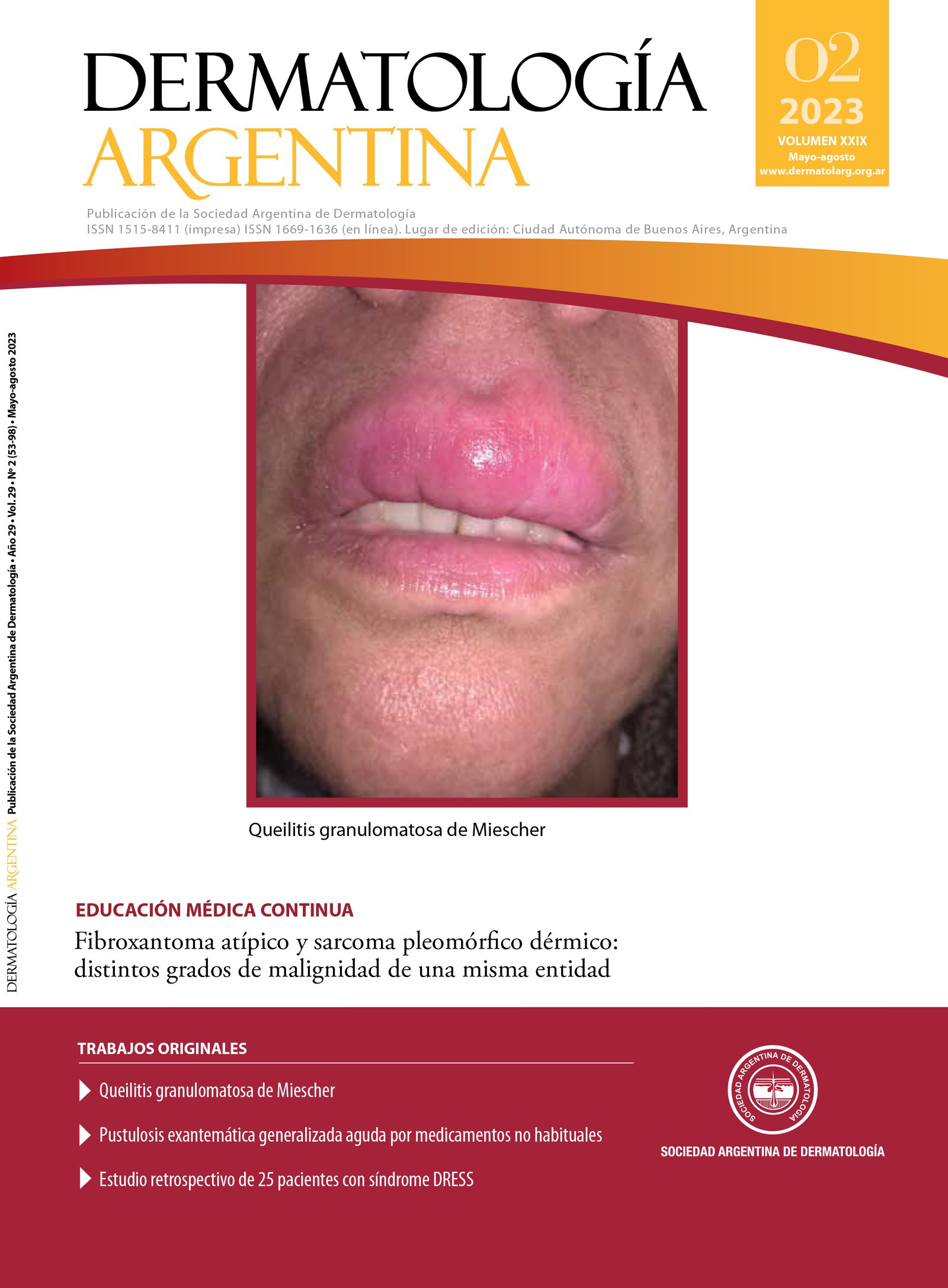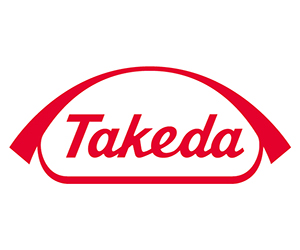Atypical fibroxanthoma and pleomorphic dermal sarcoma: different degrees of malignancy of the same entity
DOI:
https://doi.org/10.47196/da.v29i2.2451Keywords:
atypical fibroxanthoma, pleomorphic dermal sarcoma, definitionAbstract
The relationship between atypical fibroxanthoma and pleomorphic dermal sarcoma remains under discussion to this day. They are skin tumors that occur in elderly patients, with significant photodamage skin, most common location in the head and neck. Its histopathology shows different proportions of epithelioid, spindle and giant multinucleated cells with pleomorphic nuclei. The diagnosis is by exclusion, using a broad panel of immunohistochemistry. Clinically, FXA is a tumor with well-defined borders, it does not infiltrate deep tissues, it does not invade lymphovascular or perineural tissue and there is an absence of tumor necrosis, which distinguishes it from SPD.
In summary, both tumors share clinical and epidemiological characteristics and have a high degree of histopathological and immunohistochemical overlap. This is what has encouraged the classification of FXA and SPD as the same entity with different degrees of malignancy. Fact already accepted in the most current scientific publications.
The objective of this work is to comment on the latest updates that were presented in the literature to define both tumors.
References
I. Kuntz T, Siebdrath J, Hofmann SC, Baltaci M, et ál. Increase of atypical fibroxanthoma and pleomorphic dermal sarcoma: a retrospective analysis of four German skin cancer centers. J Dtsch Dermatol Ges. 2022;20:1581-1588.
II. Soleymani T, Aasi SZ, Novoa R, Hollmig ST. Atypical fibroxanthoma and pleomorphic dermal sarcoma: updates on classification and management. Dermatol Clin. 2019;37:253-259.
III. Cohen AJ, Talasila S, Lazarevic B, Gleason L, et ál. Pleomorphic dermal sarcoma of the scalp. Review of management and distinguishing features from atypical fibroxanthoma. JAAD Case Rep. 2022;29:123-126.
IV. Kolb L, Schmieder GJ. Atypical fibroxanthoma. In: StatPearls. Treasure Island (FL): StatPearls Publishing; septiembre 18, 2022.
V. Helbig D, Ziemer M, Dippel E, Erdmann M, et ál. S1-guideline atypical fibroxanthoma (AFX) and pleomorphic dermal sarcoma (PDS). J Dtsch Dermatol Ges. 2022;20:235-243.
VI. Iglesias-Pena N, López-Solache L, Martínez-Campayo N, et ál. Incidence rate and clinicopathological features of 62 atypical fibroxanthomas in a North-Western Spanish population. Australian J Dermatology. 2020;61:e22-e27.
VII. WHO Classification of tumor: soft tissue and bone tumours, 5th Ed. The WHO Classification of Tumours. Editorial Board. Lyon: IARC Press; 2020:268-270.
VIII. Iglesias-Pena N, Martínez-Campayo N, López-Solache L. Relation between atypical fibroxanthoma and pleomorphic dermal sarcoma: histopathologic features and review of the literature. Actas Dermosifiliogr (Engl Ed). 2021;112:392-405
IX. Rosenfeld DJ, Cappel MA, Tolkachjov SN. Cutaneous mesenchymal tumors treated with Mohs micrographic surgery: a comprehensive review. Int J Dermatol. 2021; 60:1334-1342.
X. Soleymani T, Tyler Hollmig S. Conception and management of a poorly understood spectrum of dermatologic neoplasms: atypical fibroxanthoma, pleomorphic dermal sarcoma, and undifferentiated pleomorphic sarcoma. Curr Treat Options Oncol. 2017; 18:50.
XI. Ørholt M, Abebe K, Rasmussen LE, Aaberg FL, et ál. Atypical fibroxanthoma and pleomorphic dermal sarcoma: local recurrence and metastasis in a nationwide population-based cohort of 1118 patients. J Am Acad Dermatol. 2023;S0190-9622(23)02628-2.
XII. Persa OD, Loquai C, Wobser M, et ál. Extended surgical safety margins and ulceration are associated with an improved prognosis in pleomorphic dermal sarcomas. J J Europ Acad Dermatol Venereol. 2019;33(8):1577-80.
XIII. Helbig D, Quaas A, Mauch C, et ál. Copy number variations in atypical fibroxanthomas and pleomorphic dermal sarcomas. Oncotarget. 2017;8:109457-67.
XIV. Helbig D, Ilhe MA, Putz K, et ál. Oncogene and therapeutic target analyses in atypical fibroxanthomas and pleomorphic dermal sarcomas. Oncotarget. 2016;7(16);21763-74.
XV. Klein S, Quaas A, Noh KW, et ál. Integrative analysis of pleomorphic dermal sarcomas reveals fibroblastic differentiation and susceptibility to immunotherapy. Clin Cancer Res. 2020;26(21):5638-45.
Downloads
Published
Issue
Section
License
Copyright (c) 2023 on behalf of the authors. Reproduction rights: Argentine Society of Dermatology

This work is licensed under a Creative Commons Attribution-NonCommercial-NoDerivatives 4.0 International License.
El/los autor/es tranfieren todos los derechos de autor del manuscrito arriba mencionado a Dermatología Argentina en el caso de que el trabajo sea publicado. El/los autor/es declaran que el artículo es original, que no infringe ningún derecho de propiedad intelectual u otros derechos de terceros, que no se encuentra bajo consideración de otra revista y que no ha sido previamente publicado.
Le solicitamos haga click aquí para imprimir, firmar y enviar por correo postal la transferencia de los derechos de autor



















